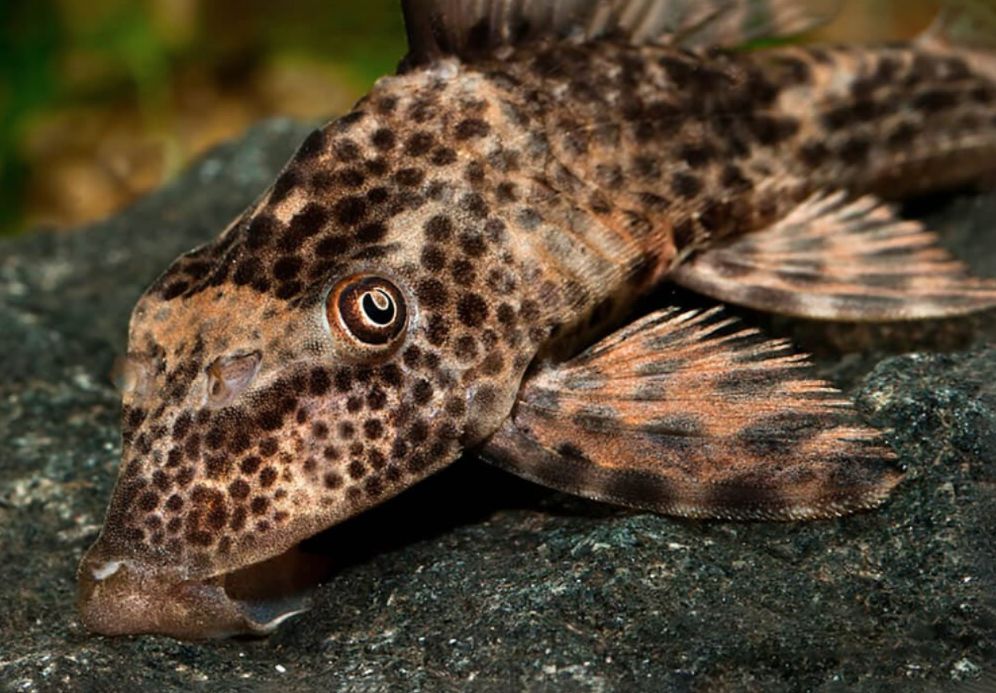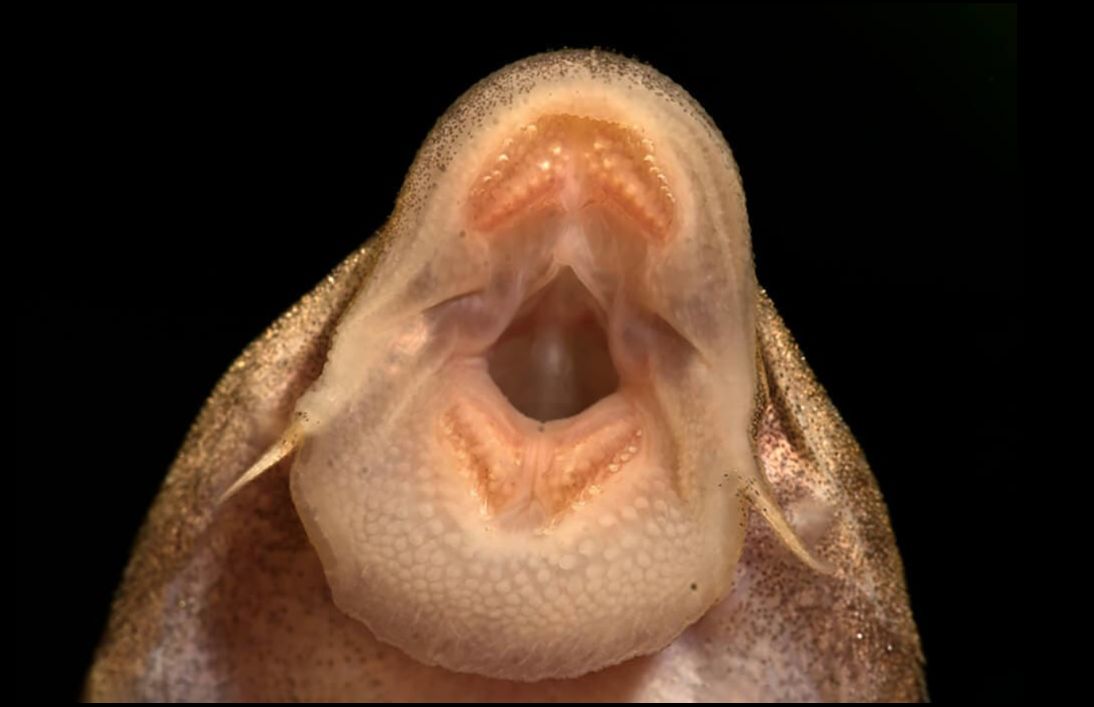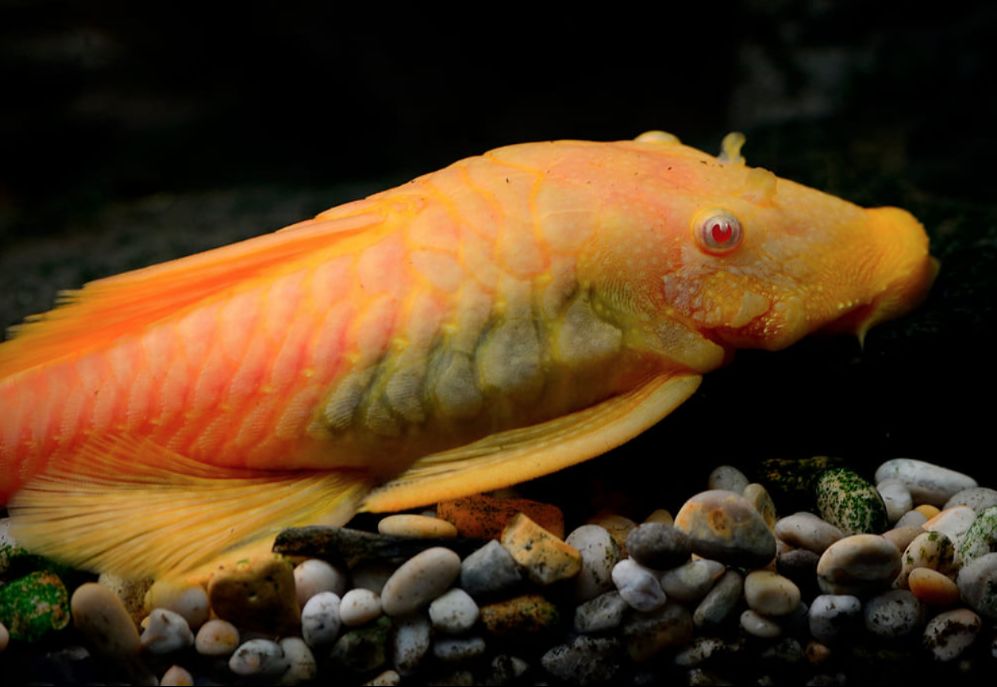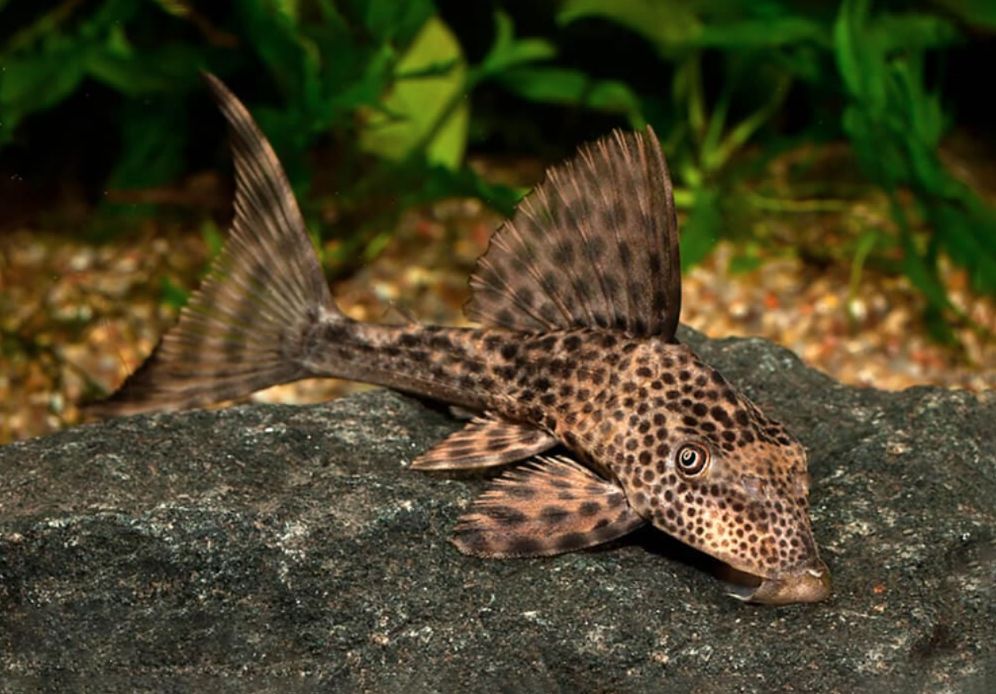The plecostomus (Hypostomus plecostomus), commonly known as the suckermouth catfish, is a popular addition to many home aquariums. Frequently seen in pet stores, this fish is well-regarded among aquarists for its ability to help maintain tank cleanliness. Known for its hardiness and low care requirements, the plecostomus can thrive in various conditions. However, there are some important considerations to keep in mind before adding one to your aquarium.
These fish are effective algae eaters, helping to keep your tank surfaces clear of unsightly green growth. They can often be found resting on the substrate or clinging to decorations, using their specialized mouths to graze on algae and detritus. It’s essential to provide them with adequate space and a varied diet to ensure their health and well-being.
While plecostomus are generally easy to care for, they do require specific conditions to thrive. For example, they prefer a tank with plenty of hiding spots and a well-maintained environment. Additionally, understanding their growth potential and social behaviors will help you create a harmonious aquarium setup.or saw it on sale. This is a perfect tank cleaner, plus it is one of the most enduring and undemanding kind of catfish, but…

Contents
Habitat in the wild
The plecostomus, commonly known as pleco, is a type of freshwater catfish belonging to the family Loricariidae, renowned for its algae-eating habits and unique appearance. This popular aquarium inhabitant is not only an effective tank cleaner but also one of the most resilient and undemanding catfish species available to hobbyists.
Originating from the tropical waters of central and South America, particularly the Amazon River basin, plecos thrive in oxygen-rich rivers and estuaries. They are typically found in areas with slow to moderate water flow, where rocky substrates provide both grazing surfaces for algae and shelter from potential predators. Some species also inhabit regions with submerged logs and driftwood, which serve as both hiding spots and feeding grounds.
Plecos exhibit remarkable adaptability to various environmental conditions, a trait honed over their evolutionary history. Their distinctive suckermouth allows them to attach securely to surfaces while scraping off algae and organic matter. This ability enables them to maintain their position during heavy rains, unlike less adaptable species that may be swept downstream.
During the dry season, when water levels drop, plecos can survive by extracting oxygen from atmospheric air. Their intestinal tract is uniquely structured with numerous capillary tubes, enabling this adaptation. Remarkably, plecostomus can remain out of water for up to 30 hours, ensuring their survival during extreme conditions.
Description
Size
The common pleco, known scientifically as Hypostomus plecostomus, is one of the larger species of plecos commonly found in aquariums. This fascinating fish can grow significantly, with adults typically ranging from 12 to 24 inches (30 to 60 cm) in length. In ideal conditions, some individuals may even surpass these average sizes.
Due to their potential size, the common pleco requires a spacious aquarium to thrive. A tank of at least 75 gallons is recommended for adult specimens, providing ample space for swimming, hiding, and exhibiting natural behaviors.
Before adding a common pleco to your aquarium, it’s essential to consider the commitment and resources needed for their care. Their size and specific requirements necessitate careful planning to ensure a healthy environment. However, their remarkable algae-eating habits make them valuable additions to your tank, contributing to its overall health and cleanliness.
Lifespan
In captivity, with proper care and a suitable environment, the common pleco typically has an average lifespan of 10 to 15 years. However, some individuals can live 20 years or more when provided with excellent care.
Body
The suckermouth catfish, commonly known as the plecostomus, features a distinct head that is large in proportion to its body. Its small, high-set eyes are covered by a membrane that functions like a camera diaphragm, regulating the amount of light that enters. During the day, this membrane covers almost the entire eye, while at night, it gradually opens to allow more light.
The body is elongated and protected by four rows of bony plates, with the underside and abdomen remaining unarmored. The dorsal fin is prominent, consisting of one coarse ray and seven soft rays, while the anal fin includes one coarse ray and three to five soft rays. The tail fin has a unique moon shape, with the lower part being longer than the upper.
In terms of coloration, the plecostomus typically displays a gray-brown or brown hue with a green tint, adorned with dark spots and stripes. These features not only contribute to its visual appeal but also aid in camouflage within its natural habitat.
| Characteristic | Description |
|---|---|
| Family | Loricariidae |
| Common Name | Plecostomus, Pleco, suckermouth catfish, common pleco |
| Scientific Name | Various species, e.g., Hypostomus, Panaque, Ancistrus |
| Size | Varies by species, typically 4 to 24 inches (10-60 cm) |
| Lifespan | 10 to 20+ years in captivity |
| Habitat | Freshwater rivers, streams, and tributaries |
| Distribution | South America |
| Diet | Algae, plant matter, and some protein-rich foods |
| Behavior | Nocturnal, often hides during the day |
| Tank Requirements | Large tank with hiding spots, rocks, and driftwood |
| Water Parameters | Neutral to slightly acidic or slightly alkaline |
| Water Temperature | Low to mid-70s Fahrenheit (around 22-26°C) |
| Compatibility | Generally peaceful but may be territorial |
| Special Considerations | Some species may grow large and require spacious tanks. Provide proper filtration and regular water maintenance. |


Difficulties in keeping
While the suckermouth catfish, commonly known as the plecostomus, can be a rewarding addition to an aquarium, it may also pose challenges for aquarists. Typically purchased as a juvenile measuring about 5 to 10 cm (2 to 4 inches), this fish grows rapidly and can reach sizes of up to 60 cm (24 inches) in length, though it generally settles around 30 cm (15 inches) in home tanks.
Caring for a plecostomus is straightforward as long as its diet is rich in algae or supplemented with specialized catfish food. However, its size makes it unsuitable for beginner aquarists who may not have the resources for a large tank.
Water parameters are less critical than maintaining cleanliness, so regular maintenance is essential. Prospective owners should be prepared for the commitment of providing a spacious environment, as the plecostomus grows quickly and requires ample room to thrive.
Care and keeping in a tank
Tank decor
Thoughtful decoration and appropriate hiding spots will help these fish thrive.
Start by incorporating hiding places, as suckermouth catfish are timid bottom dwellers that prefer to hide during the day. Including snags, stones, and other shelters will create a safe space for them to retreat when they feel vulnerable. Snags not only serve as hiding spots but also promote algae growth, which is a vital food source for the fish.
Driftwood is another crucial addition. Plecos enjoy grazing on driftwood, which also provides essential nutrients for their diet. Including pieces of driftwood enhances the tank’s natural appearance while offering both dietary benefits and hiding places.
Rocks and caves can be arranged to create secure crevices. These hiding spots offer a sense of safety, especially during the day when the fish are resting.
Incorporating live plants can enhance the aquarium’s aesthetics while providing additional foraging opportunities. Some plecos may nibble on certain plant species, so choose hardy plants with tougher leaves. Keep in mind that it’s important to cover the tank, as these fish have a tendency to jump out of the water.
PVC pipes can also serve as excellent hiding spots. Cut pieces with smooth edges to prevent any injuries, allowing your catfish to explore without risk.
Finally, ensure there is plenty of open swimming space. A well-decorated tank that balances hiding spots with open areas will reduce stress and encourage natural behaviors in your suckermouth catfish, contributing to their overall health and well-being.
Substrate
For plecos, consider the following substrate characteristics:
Smooth and Non-Abrasive: As bottom-dwelling fish with delicate skin and barbels, plecos require substrates that won’t cause damage. Sand, fine gravel, or smooth river rocks are ideal choices.
Dark in Color: A darker substrate enhances the pleco’s colors and creates a more secure environment, helping them feel at home.
Natural-Looking: Using natural-looking substrates, like brown or black sand or gravel, can mimic their natural habitat, contributing to a more comfortable setting.
Easy to Clean: Opt for substrates that are simple to clean and maintain. Smooth materials are less likely to trap debris, making it easier to keep the tank clean.
Inert: Ensure the substrate is inert, meaning it won’t leach harmful chemicals into the water that could negatively affect the fish.
Depth: Aim for a substrate depth of around 2 to 3 inches (5 to 8 cm) to allow plecos to forage and dig as they would in their natural environment.
Tank size
The tank size for a common pleco should accommodate its adult size, as keeping this fish in a small tank can lead to stress and health issues. For an adult common pleco, a minimum tank size of 75 gallons (about 283.9 liters) is recommended. Ideally, a larger tank—such as a 100-gallon or more—would be even better, providing ample space for swimming, exploring, and exhibiting natural behaviors.
Since the suckermouth catfish grows quickly, it needs sufficient room to thrive. A larger tank not only enhances the well-being of the pleco but also simplifies maintenance and helps maintain stable water parameters. Including plenty of hiding spots, rocks, and driftwood in the tank will create areas for the pleco to explore, rest, and graze on algae.
These fish can live for many years with proper care, so investing in an appropriate tank size from the start will ensure a comfortable and healthy environment for your common pleco throughout its life.
Water parameters
As previously mentioned, while specific tank water parameters for a common pleco aren’t overly critical, maintaining clean water with efficient filtration and regular water changes is essential due to the significant organic waste these fish produce.
The recommended water parameters are as follows:
- Temperature: Maintain between 72°F and 82°F (22°C to 28°C).
- pH: Keep within the range of 6.5 to 7.5.
- Hardness: Aim for a hardness level of 2 to 12 dGH (degrees of general hardness).

Diet
The suckermouth catfish primarily feeds on algae and plant matter, but it may also consume some live food. While it can nibble on soft-leaved tank plants, this usually occurs only when there isn’t enough algae or supplemental food available. To keep a healthy plecostomus, it’s important to maintain a tank with a good amount of algae; if the fish consumes it faster than it grows back, you’ll need to provide additional artificial food.
For a varied diet, you can offer vegetables such as spinach, lettuce, squash, and cucumbers. Live food options include earthworms, bloodworms, insect larvae, and small crustaceans. It’s best to feed your pleco in the evening, just before turning off the tank lights.
A notable requirement for plecos is the need for cellulose in their diet to support proper digestion. In the wild, they obtain this by scraping algae from wood, so incorporating driftwood into your tank is beneficial for their health and digestive well-being.
Tank mates
This is a nocturnal fish. It is peaceful when it’s young, but it becomes quite quarrelsome and territory dependent as an adult. May live peacefully with its kind, if they grew together in one tank, but if they fight, it is till the weakest one dies.
May nip scales from discus fish, angelfishes while they sleep. You can keep juveniles in a community tank, however, it is better to keep the adult species in a separate tank or together with other large fish species.
As a rule pleco tank mates are large cichlids from South America: oscar fish, green terror, flowerhorn. This happens for two reasons – the suckermouth catfish is extremely interesting and it makes your tank very unusual as well as it can protect itself even from such aggressive fishes.
Gender differences: male vs female
Determining the sex of the common pleco can be challenging, especially in younger fish. However, there are some general differences that can help identify adult males and females:
Size: Adult males may be slightly larger than females, though this difference is often subtle and can vary due to genetics and environmental factors.
Odontodal Growth: Males typically develop small, hair-like growths called odontodes on their pectoral fins and sometimes on their cheeks. These growths are usually more pronounced and numerous in males compared to females, but they can vary by individual.
Vent Area: In mature males, the area around the vent may appear more pronounced or slightly swollen compared to females. This difference can be difficult to distinguish, especially in younger or smaller fish.
Behavior: During the breeding season, males may show more territorial and aggressive behaviors as they compete for female attention. However, this behavior is not exclusive to males and can vary significantly among individuals.
It’s important to note that these characteristics might not be very distinct in every fish, making it unreliable to sex plecos based solely on physical traits, especially in young specimens. The most accurate way to determine sex is through breeding behavior or by examining the genital papilla during breeding season, though this can be complex in a home aquarium.
Breeding
Breeding common plecos can be quite challenging in a home aquarium, but with the right setup and conditions, it can be achieved. Here are some key guidelines for breeding:
Tank Setup: Create a dedicated breeding tank that mimics their natural habitat. Include plenty of hiding spots using caves, PVC pipes, or hollow driftwood where the plecos can lay eggs and provide shelter for the fry.
Water Parameters: Maintain stable and clean water conditions. Aim for a temperature of 80-84°F (27-29°C), with a slightly acidic to neutral pH around 6.5 to 7.5, and moderate hardness.
Conditioning the Fish: Prior to breeding, condition both male and female plecos with a varied diet rich in nutrients. Offer high-quality pellets, algae-based foods, and occasional live or frozen foods to ensure they are healthy and ready to breed.
Identifying Males and Females: Sexing plecos can be tricky, particularly in younger specimens. During breeding season, males may develop small hair-like growths called odontodes on their pectoral fins and cheeks, though this is not always a reliable indicator.
Breeding Behavior: The breeding process often involves complex courtship rituals. Males may become territorial and chase females around the tank. They will clean surfaces, including nesting spots, in preparation for egg-laying.
Egg-Laying and Care: After the female lays her eggs in the selected hiding spot, both parents may guard the eggs. The male often fans them with his fins to ensure proper oxygenation. Plecos are generally attentive parents, protecting the eggs and fry until they can fend for themselves.
Separating Fry: Once the fry hatch, they will remain in the hiding spot for a while. It’s advisable to remove the adult plecos to prevent them from accidentally consuming the fry.